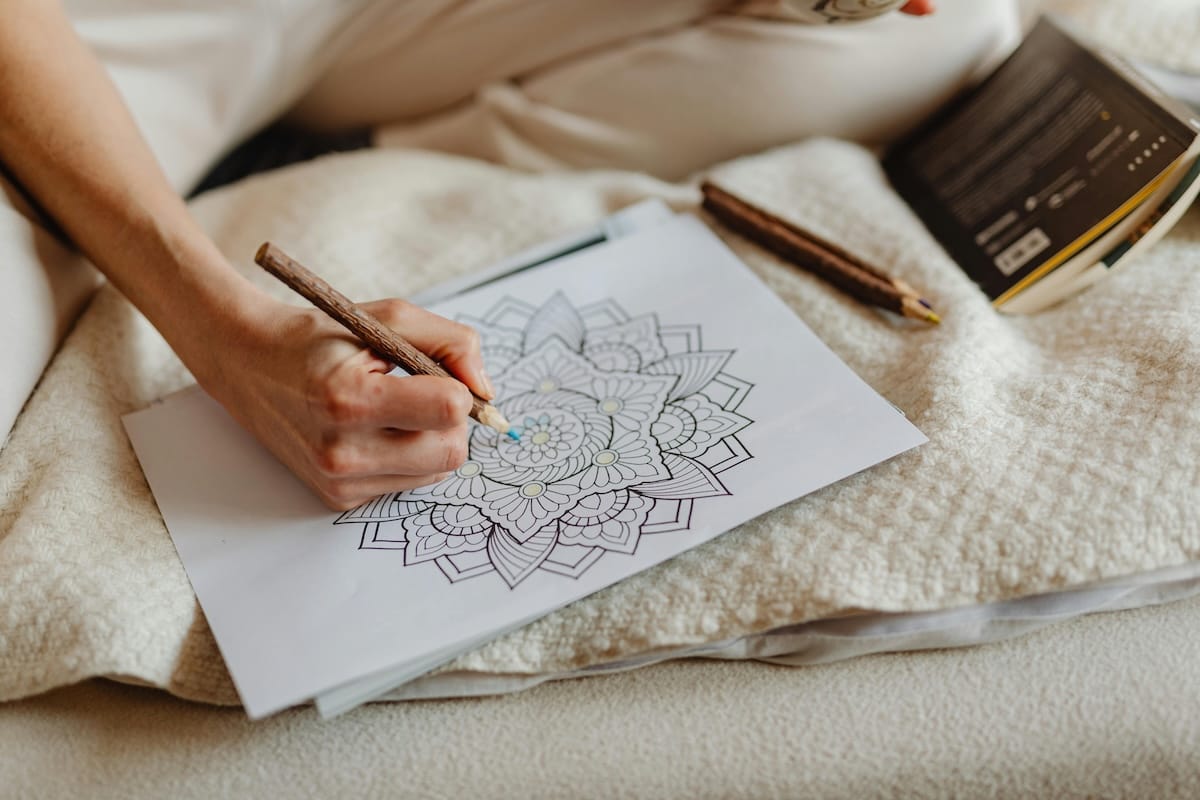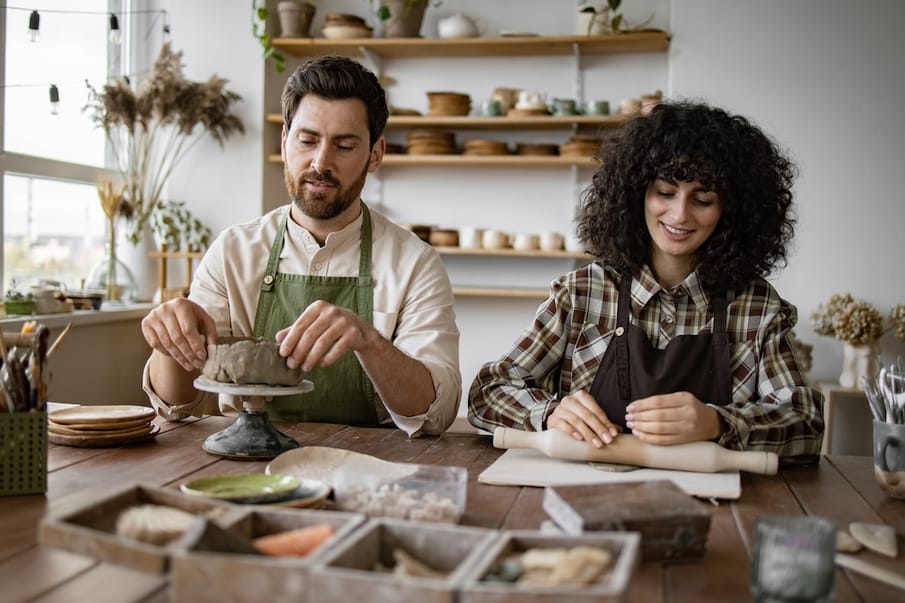Shake off self-doubt and uncover the benefits of self-expression
My friend tells me about a painting class she’s been going to. Part of me is tempted to join her, but then I find myself saying, “That sounds lovely, but I’m useless at art.”
Does this sound familiar? Whether it’s singing, sewing, painting, or pottery, you may find yourself flinching at the idea of trying new things. The truth is, I’d love to go along to an art class, but my inner critic tells me I would be awful at it. In some ways, I very much see myself as creative – I write, and I studied creative writing. Yet, despite the fact the word ‘creative’ is literally in the name of my degree, I still sometimes feel resistant to describing myself as creative, and find myself reluctant to try many other activities.
Whether you have an artistic hobby, or describe yourself as ‘just not creative’, it’s understandably hard to try something that takes you out of your comfort zone. But tapping into this side of ourselves can be so worthwhile.
“Creative activities – whether it’s painting, writing, knitting, baking, or even gardening – offer a chance to step away from life’s busyness,” says life coach Anita Gohil-Thorp. “They invite us to be mindful and present, using our senses in ways that feel grounding. In today’s tech-driven world, creativity also provides an opportunity to unplug from screens, giving our minds a much-needed break. While technology and AI have made creative tools more accessible, going offline for hands-on creative activities can enhance relaxation and focus. In turn, this can promote energy for other daily activities and demands, as well as clarity and effective concentration.”

Anita highlights how creativity can help with everything from social connection and relaxation to exploring different sides of ourselves. “By reconnecting with our creative side, we not only nurture our wellbeing, but we also uncover our hidden joys and strengths,” she adds.
Why do we doubt ourselves?
So, despite the benefits, why is it common to question our creativity? “Often, the belief that we’re ‘just not creative’ comes from a narrow and misplaced definition of what being creative means,” Anita explains. “The problem is that creativity is often linked to exceptional artistry, whether in art, music, cooking or another creative field. When we define it this way, it can feel intimidating and unattainable, leading us to believe there’s no point in trying. The comparison is unrealistic, yet it stops us before we even try.
“Many of us are also conditioned to think of creativity as an inherent trait, something you’re either born with or not,” adds Anita. “If, as children, our creative efforts were undervalued, negatively compared to another child’s or dismissed as impractical, we may have learned to suppress that part of ourselves. Over time, negative self-talk and a lack of opportunities for creative expression reinforce the idea that we’re simply ‘not creative’.”
Perfectionism can contribute, too. “Perfectionists often set unrealistically high expectations for themselves, which can lead to constant self-doubt,” says Anita. “This harsh self-judgment, combined with a fear of not meeting their own standards, can stop them from stepping outside their comfort zone to try creative activities. Not only are they highly critical of themselves, but they can also be held back by the fear of being negatively judged by others.”
This rings true to my fears about picking up a paintbrush – not only am I worried about letting myself down, but also of being seen as not good enough by others. It feels a little sad to think that this self-doubt has stopped me from doing enjoyable activities. So, how can we move forward?
Embracing creativity
“Changing how we define creativity is essential,” Anita tells me. “Creativity is not just about innate artistry – it’s a skill that can be nurtured and developed in a diverse range of activities. Embracing this broader perspective can help us reconnect with our authentic selves and improve our overall happiness and wellbeing.”
Shifting our mindset can help too. “As adults, we can reflect on our patterns of thinking and learn self-acceptance. We can embrace that creativity is not about perfection, it is about curiosity and self-expression in novel ways,” Anita says, explaining how letting creativity be about the process, not the outcome, can help. Being creative on your own – like writing a poem without feeling the pressure to share – can be a way of gently getting in touch with your creative side with less worry about perfectionism.
“Starting small and taking the pressure off, for example, by accepting you are a beginner is also helpful. In coaching, we talk about giving ourselves permission – giving yourself permission to create just for the sake of creating,” says Anita. “Try activities that feel manageable (not hard work or requiring new equipment) such as an adult mandala colouring book or an enjoyable activity you used to do as a child.”

Trying a range of different things can help you tap into what speaks to you. “For example, after trying sewing, baking, singing, colouring, or painting, you will notice what you naturally gain joy from,” says Anita.
Anita recommends getting in touch with how we were creative as children. I think about how much I loved art as a child, the sketchbooks full of drawings, the pots of paint spread across the dining table on a rainy Sunday afternoon. I used to take joy in expressing myself, in getting messy, in having fun without the pressure of creating a masterpiece.
I smile at this memory and then I text my friend. I ask when the next painting session is, and tell her I’ll be there.


Comments